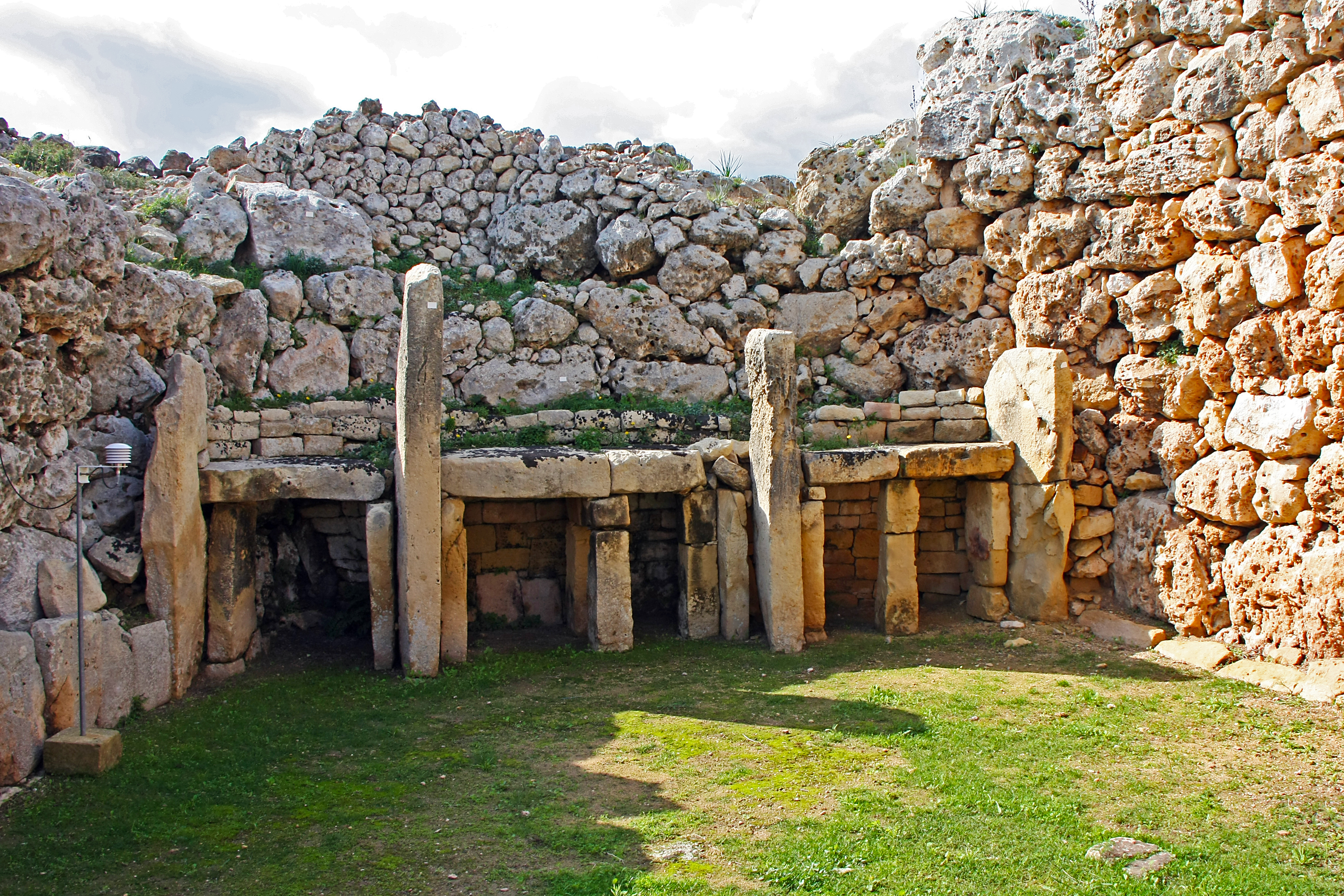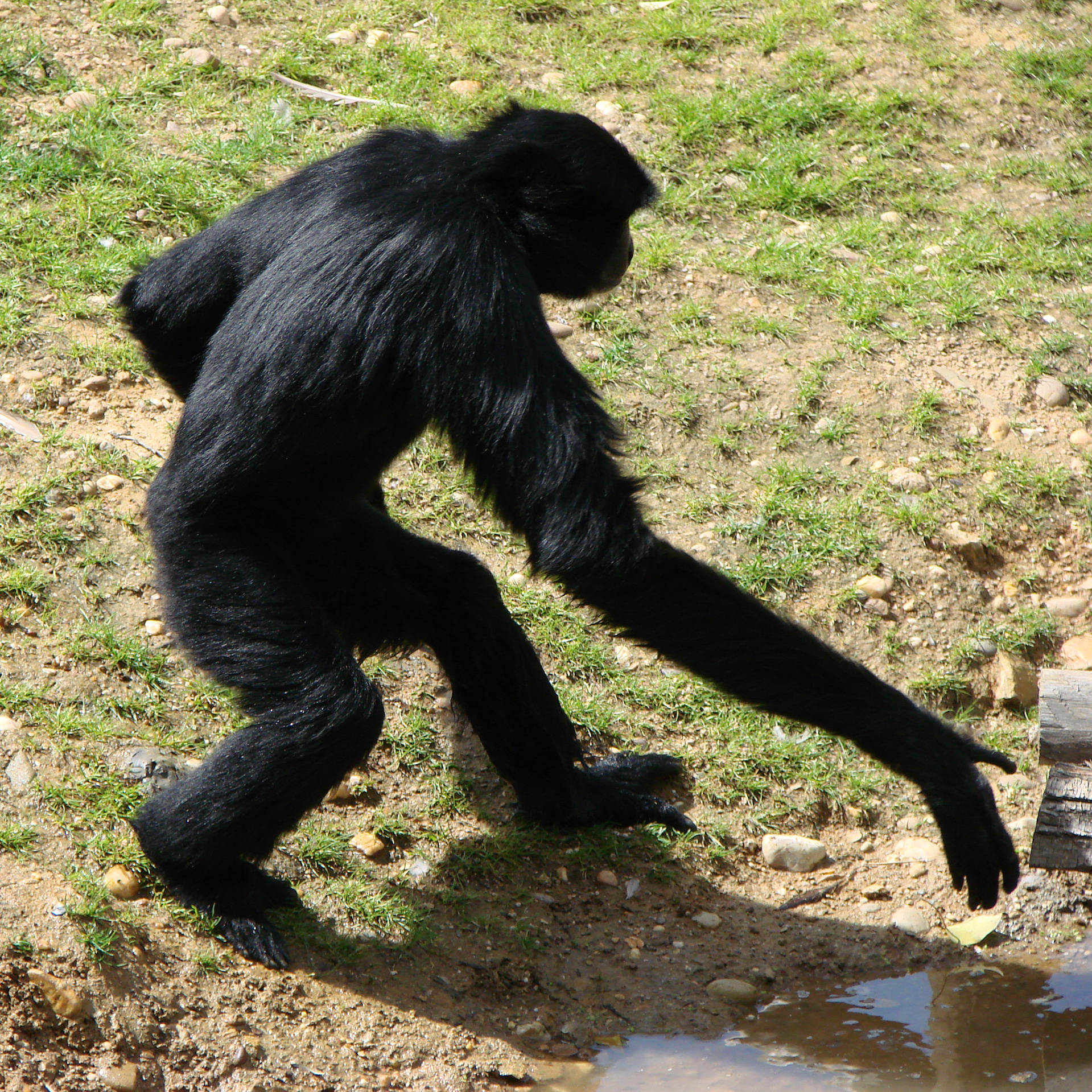|
Pinza-Abu Cave Man
The is a prehistoric people known from bones found in the Pinza-Abu Cave, near Ueno in Miyako Island, southern Japan. The remains appear to have the modern man anatomical type and have been dated to about 30,000 years ago, i.e. 25,800 ± 900 and 26,800 ± 1,300 before present. The name "Pinza-Abu" literally means "goat cave" in the local Miyakoan language. Findings Between 1974 and 1989, expeditions and surveys were done on six occasions at the Pinza-Abu cave site. The bones found were measured and compared to recent Japanese and the Minatogawa Man. The occipital and supernumerary bones have been reconstructed from the few fragments found to create a nearly complete squama. The occipital squama has especially large features in the sagittal arcs, compared to that of modern Japanese. The right parietal bone has been found largely intact, with only minor fragments missing. Characteristics in the sagittal dimension, however, are much smaller compared to the modern Japanese ... [...More Info...] [...Related Items...] OR: [Wikipedia] [Google] [Baidu] |
Prehistory
Prehistory, also known as pre-literary history, is the period of human history between the use of the first stone tools by hominins 3.3 million years ago and the beginning of recorded history with the invention of writing systems. The use of symbols, marks, and images appears very early among humans, but the earliest known writing systems appeared 5000 years ago. It took thousands of years for writing systems to be widely adopted, with writing spreading to almost all cultures by the 19th century. The end of prehistory therefore came at very different times in different places, and the term is less often used in discussing societies where prehistory ended relatively recently. In the early Bronze Age, Sumer in Mesopotamia, the Indus Valley Civilisation, and ancient Egypt were the first civilizations to develop their own scripts and to keep historical records, with their neighbors following. Most other civilizations reached the end of prehistory during the following Iron A ... [...More Info...] [...Related Items...] OR: [Wikipedia] [Google] [Baidu] |
Stone Age
The Stone Age was a broad prehistoric period during which stone was widely used to make tools with an edge, a point, or a percussion surface. The period lasted for roughly 3.4 million years, and ended between 4,000 BC and 2,000 BC, with the advent of metalworking. Though some simple metalworking of malleable metals, particularly the use of gold and copper for purposes of ornamentation, was known in the Stone Age, it is the melting and smelting of copper that marks the end of the Stone Age. In Western Asia, this occurred by about 3,000 BC, when bronze became widespread. The term Bronze Age is used to describe the period that followed the Stone Age, as well as to describe cultures that had developed techniques and technologies for working copper alloys (bronze: originally copper and arsenic, later copper and tin) into tools, supplanting stone in many uses. Stone Age artifacts that have been discovered include tools used by modern humans, by their predecessor species in t ... [...More Info...] [...Related Items...] OR: [Wikipedia] [Google] [Baidu] |
Upper Paleolithic Homo Sapiens Fossils
Upper may refer to: * Shoe upper or ''vamp'', the part of a shoe on the top of the foot * Stimulant, drugs which induce temporary improvements in either mental or physical function or both * ''Upper'', the original film title for the 2013 found footage film ''The Upper Footage ''The Upper Footage'' (also known as ''Upper'') is a 2013 found footage film written and directed by Justin Cole. First released on January 31, 2013 to a limited run of midnight theatrical screenings at Landmark’s Sunshine Cinema in New York Cit ...'' See also {{Disambiguation ... [...More Info...] [...Related Items...] OR: [Wikipedia] [Google] [Baidu] |
Archaeology Of Japan
Archaeology or archeology is the scientific study of human activity through the recovery and analysis of material culture. The archaeological record consists of artifacts, architecture, biofacts or ecofacts, sites, and cultural landscapes. Archaeology can be considered both a social science and a branch of the humanities. It is usually considered an independent academic discipline, but may also be classified as part of anthropology (in North America – the four-field approach), history or geography. Archaeologists study human prehistory and history, from the development of the first stone tools at Lomekwi in East Africa 3.3 million years ago up until recent decades. Archaeology is distinct from palaeontology, which is the study of fossil remains. Archaeology is particularly important for learning about prehistoric societies, for which, by definition, there are no written records. Prehistory includes over 99% of the human past, from the Paleolithic until the advent ... [...More Info...] [...Related Items...] OR: [Wikipedia] [Google] [Baidu] |
History Of The Ryukyus
This article is about the history of the Ryukyu Islands southwest of the main islands of Japan. Etymology The name "Ryūkyū" originates from Chinese writings. The earliest references to "Ryūkyū" write the name as 琉虬 and 流求 () in the Chinese history ''Book of Sui'' in 607. It is a descriptive name, meaning "glazed horn- dragon". The origin of the term "Okinawa" remains unclear, although "Okinawa" ( Okinawan: Uchinaa) as a term was used in Okinawa. There was also a divine woman named "Uchinaa" in the book ''Omoro Sōshi'', a compilation of ancient poems and songs from Okinawa Island. This suggests the presence of a divine place named Okinawa. The Chinese monk Jianzhen, who traveled to Japan in the mid-8th century CE to promote Buddhism, wrote "Okinawa" as 阿児奈波 (). The Japanese map series Ryukyu Kuniezu labeled the island as in 1644. The current Chinese characters (kanji) for Okinawa (沖縄) were first written in the 1702 version of Ryukyu Kuniezu. Early hi ... [...More Info...] [...Related Items...] OR: [Wikipedia] [Google] [Baidu] |
Shiraho Saonetabaru Cave Ruins
is a paleoanthropological site located on Ishigaki Island of the Yaeyama Islands in Japan. Shiraho Saonetabaru is a limestone cave. It was discovered in 2007 when plans for the New Ishigaki Airport were being developed. Remains of human heads, feet and arms were found, in all 9 bone fossils, by the ''Okinawa Limestone Cave Association'' between 2007 and 2009, and three human samples were dated to between 20,000-16,000 years before present. In the ruins were also found bones from wild boar and birds (one animal bone calibrated at 12,000 BP), while during the three months in 2011 were discovered approximately 300 human bones from the stratum between 24,000-20,000 years old. In 2015, researchers from the University of the Ryukyus and University of Tokyo succeeded in radiocarbon dating three out of five of the bones tested. The three bones yielded the following dates: (20,030 to 18,100 years BP), (22,890 to 22,400 years BP) and (24,990 to 24,210 years BP). The investigatio ... [...More Info...] [...Related Items...] OR: [Wikipedia] [Google] [Baidu] |
Yamashita Cave Man
The are the prehistoric humans known from many bones found in the Yamashita limestone cave located on the grounds of the Yamashita First Cave Site Park in Naha, Okinawa, Japan. The remains have been dated at 32,000±1000 years ago. The most important bones found in the cave in Yamashita are those of an approximately 6 to 8-year-old girl."The Paleolithic Age in Okinawa." Ryukyu Cultural Archive. Okinawa Prefectural Board of Education. http://rca.open.ed.jp/web_e/history/story/epoch1/kyusekki_3.html See also * Minatogawa Man * Pinza-Abu Cave Man * Shiraho Saonetabaru Cave Ruins * History of the Ryukyu Islands This article is about the history of the Ryukyu Islands southwest of the main islands of Japan. Etymology The name "Ryūkyū" originates from Chinese writings. The earliest references to "Ryūkyū" write the name as 琉虬 and 流求 () in the ... References Archaeology of Japan Upper Paleolithic Homo sapiens fossils Peopling of East Asia Paleolithic Japan [...More Info...] [...Related Items...] OR: [Wikipedia] [Google] [Baidu] |
Carbon-14
Carbon-14, C-14, or radiocarbon, is a radioactive isotope of carbon with an atomic nucleus The atomic nucleus is the small, dense region consisting of protons and neutrons at the center of an atom, discovered in 1911 by Ernest Rutherford based on the 1909 Geiger–Marsden experiments, Geiger–Marsden gold foil experiment. After th ... containing 6 protons and 8 neutrons. Its presence in organic materials is the basis of the radiocarbon dating method pioneered by Willard Libby and colleagues (1949) to date archaeological, geological and hydrogeological samples. Carbon-14 was discovered on February 27, 1940, by Martin Kamen and Sam Ruben at the University of California Radiation Laboratory in Berkeley, California. Its existence had been suggested by Franz N. D. Kurie, Franz Kurie in 1934. There are three naturally occurring isotopes of carbon on Earth: carbon-12 (), which makes up 99% of all carbon on Earth; carbon-13 (), which makes up 1%; and carbon-14 (), which occurs ... [...More Info...] [...Related Items...] OR: [Wikipedia] [Google] [Baidu] |
Ion-selective Electrode
An ion-selective electrode (ISE), also known as a specific ion electrode (SIE), is a transducer (or sensor) that converts the activity of a specific ion dissolved in a solution into an electrical potential. The voltage is theoretically dependent on the logarithm of the ionic activity, according to the Nernst equation. Ion-selective electrodes are used in analytical chemistry and biochemical/ biophysical research, where measurements of ionic concentration in an aqueous solution are required. Types of ion-selective membrane There are four main types of ion-selective membrane used in ion-selective electrodes (ISEs): glass, solid state, liquid based, and compound electrode. Glass membranes Glass membranes are made from an ion-exchange type of glass ( silicate or chalcogenide). This type of ISE has good selectivity, but only for several single-charged cations; mainly H+, Na+, and Ag+. Chalcogenide glass also has selectivity for double-charged metal ions, such as Pb2+, and Cd2+ ... [...More Info...] [...Related Items...] OR: [Wikipedia] [Google] [Baidu] |
Java Man
Java Man (''Homo erectus erectus'', formerly also ''Anthropopithecus erectus'', ''Pithecanthropus erectus'') is an early human fossil discovered in 1891 and 1892 on the island of Java ( Dutch East Indies, now part of Indonesia). Estimated to be between 700,000 and 2,000,000 years old, it was, at the time of its discovery, the oldest hominid fossils ever found, and it remains the type specimen for ''Homo erectus''. Led by Eugène Dubois, the excavation team uncovered a tooth, a skullcap, and a thighbone at Trinil on the banks of the Solo River in East Java. Arguing that the fossils represented the " missing link" between apes and humans, Dubois gave the species the scientific name '' Anthropopithecus erectus'', then later renamed it ''Pithecanthropus erectus''. The fossil aroused much controversy. Less than ten years after 1891, almost eighty books or articles had been published on Dubois's finds. Despite Dubois's argument, few accepted that Java Man was a transitional for ... [...More Info...] [...Related Items...] OR: [Wikipedia] [Google] [Baidu] |
Ryukyu Islands
The , also known as the or the , are a chain of Japanese islands that stretch southwest from Kyushu to Taiwan: the Ōsumi, Tokara, Amami, Okinawa, and Sakishima Islands (further divided into the Miyako and Yaeyama Islands), with Yonaguni the westernmost. The larger are mostly high islands and the smaller mostly coral. The largest is Okinawa Island. The climate of the islands ranges from humid subtropical climate (Köppen climate classification ''Cfa'') in the north to tropical rainforest climate (Köppen climate classification ''Af'') in the south. Precipitation is very high and is affected by the rainy season and typhoons. Except the outlying Daitō Islands, the island chain has two major geologic boundaries, the Tokara Strait (between the Tokara and Amami Islands) and the Kerama Gap (between the Okinawa and Miyako Islands). The islands beyond the Tokara Strait are characterized by their coral reefs. The Ōsumi and Tokara Islands, the northernmost of the isl ... [...More Info...] [...Related Items...] OR: [Wikipedia] [Google] [Baidu] |


.jpg)


